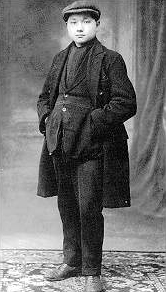Sichuan Province in the soutwest of China is closer to India than it is to Beijing. It borders Burma and Bangladash and shares borderzones with Xizang (Tibet).
The architect of modern China, Deng Xiaoping, came from a middle class Sichuan family, who sent him to France, sponsored by a group called the Diligent Work-Frugal Study Movement, a work and study program, which sponsored some 4000 young Chinese by 1927. Young Deng was only 15. Why did he do this. Deng says, in"To learn knowledge and truth from the West in order to save China." Deng was aware that China was suffering greatly, and that the Chinese people must have a modern education to save their country.
Deng and 210 other students disembarked in Marseille in December. 1920. Briefly studied and then got a job in an iron and steel plant in Paris, here he was exposed to worker discontent and exposed to Marxism. In 1921 he joined the Chinese Communist Youth League in Europe and in 1924 joined the Chinese Communist Party and became one of the leading members of the General Branch of the Youth League in Europe. In 1926 Deng traveled to the Soviet Union and studied at Moscow Sun Yat-sen University, where one of his classmates was Chiang Ching-kuo, the son of Chiang Kai Shek.
Deng at age 16
Even though Sichuan is a long way from Beijing, its influence has been important in contemporary China.
But this thread is about lesser known parts of Tibet, the Ruoergai grasslands where some Chinese still attempt to live the life of a nomad. The Chinese government wants them to settle in towns and villages, where they can have easily accessible medical services and educational facilities for their kids. Many seem reluctant, as you will see.
Here's the first images:













